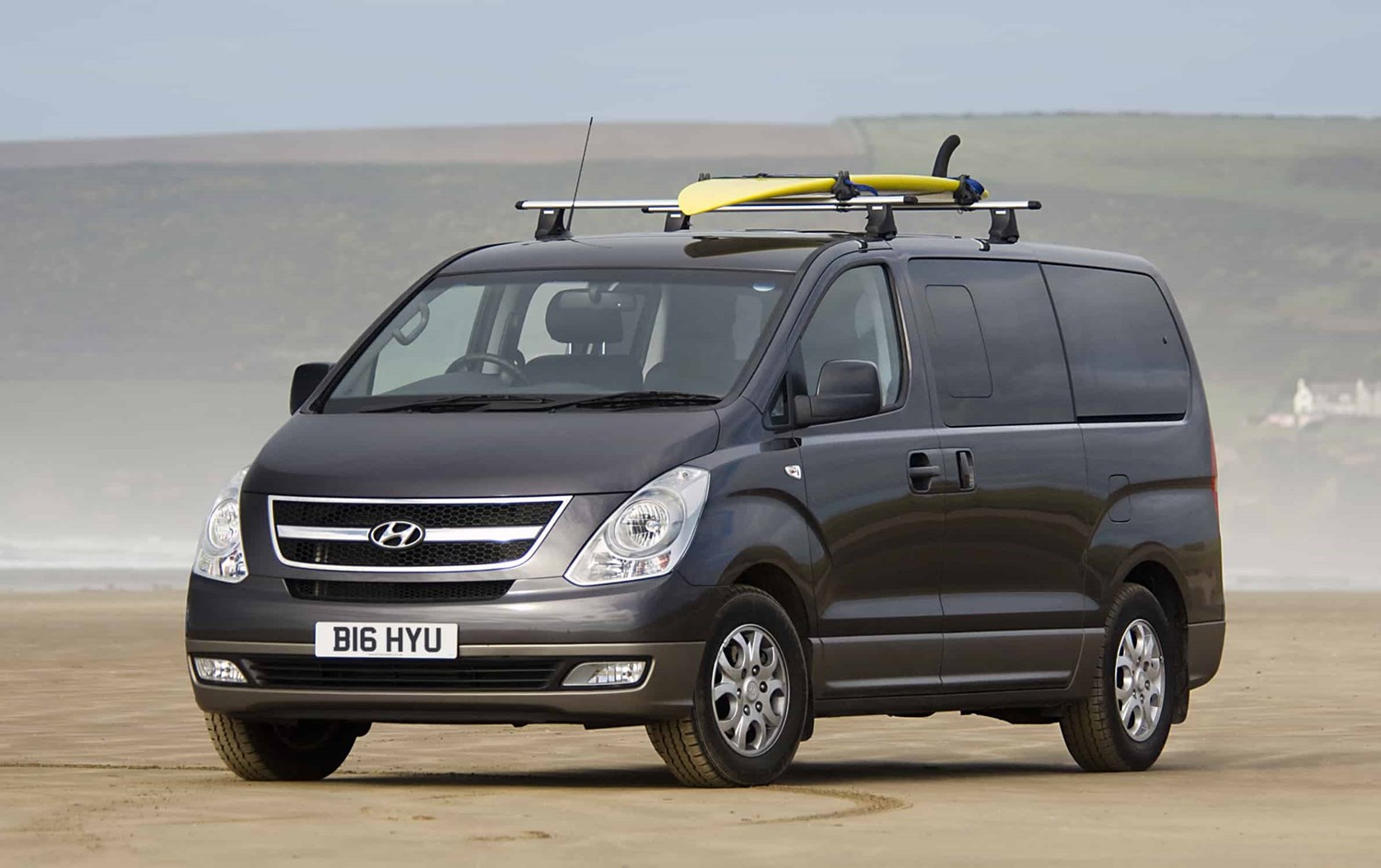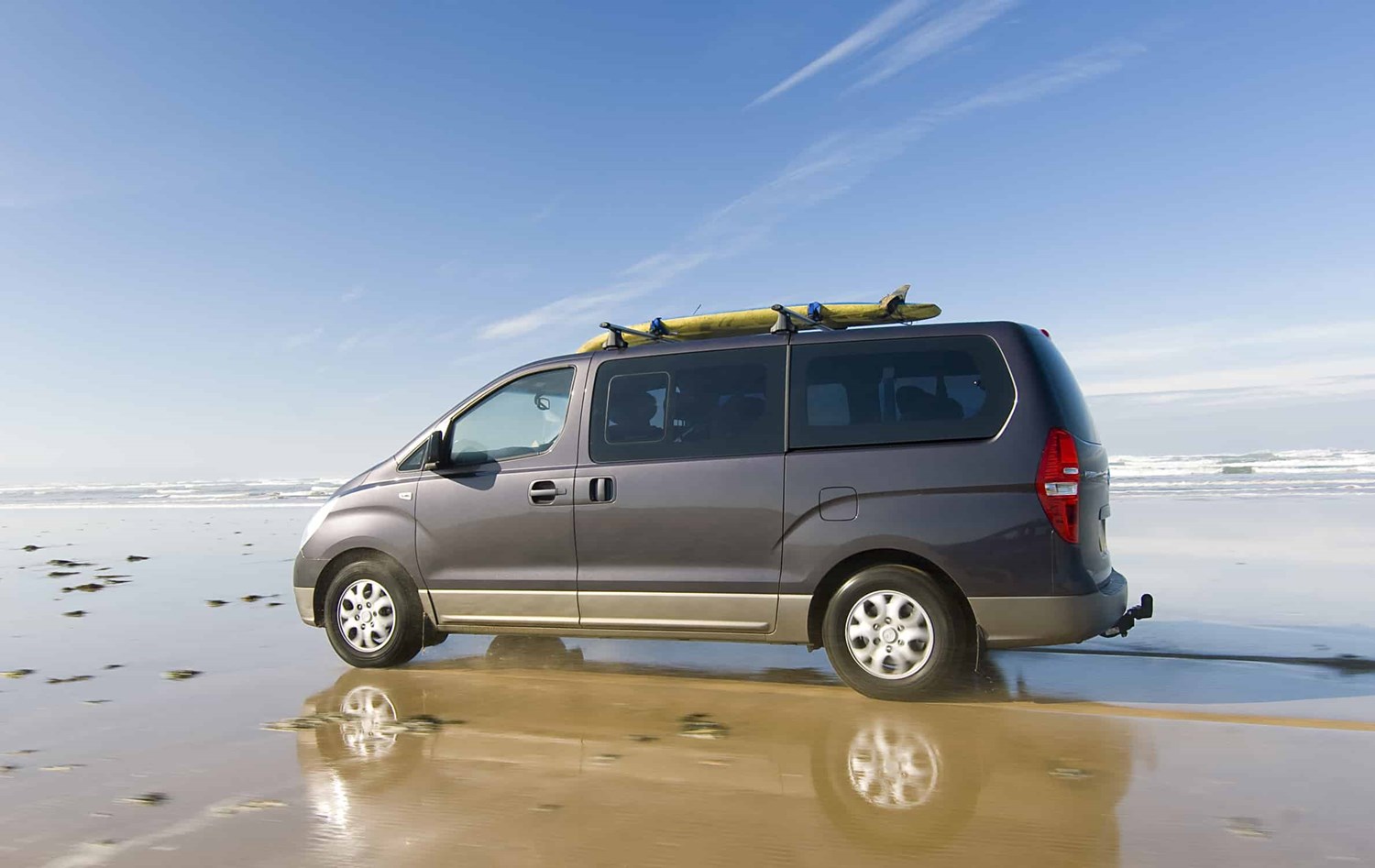Model review
Before Hyundai moved into the mainstream, it was a brand known for offering large, practical and inexpensive family cars, with models such as the Trajet and Matrix being good at doing just that.
You could argue that this i800 was the last of the breed – debuting in 2008 as one of the first ‘i’-badged products from the South Korean carmaker. It was an all-new eight-seater from the firm – rivalling van-based models including the Peugeot Expert Teepee. Along with seating eight, though, the i800 also still has a huge boot as well.
The model utilised a new 168bhp 2.5-litre diesel engine, while also prioritising value for money.
Current model
Despite being on sale for 11 years – the i800 went through that time with minimal updates. The most major update came towards the end of the MPV’s lifetime in 2018, when Hyundai introduced a larger grille, and fitted new headlights to the model to give it a more modern look.
An update a couple of years earlier also saw Hyundai fit the model with a touchscreen – helping to give the cabin a more modern feel. That said, the i800 was never a car that Hyundai shouted about particularly. It’s a model that serves a key purpose after all – carrying as many people as possible at a low price, and in that way, the model sold itself.
Value for money
When the i800 first launched, with a sub-£20,000 price it offered fantastic value for money, with few cars being able to match it for space, equipment and value at the time. Even by the time the model went off sale in 2019, prices never exceeded £30,000.
It’s also great value for money on the used market, too, with used examples starting from just £3,000. However, with the i800 being a popular choice with taxi drivers, there are plenty of high mileage examples available – our search revealing various examples that had covered in excess of 250,000 miles. While models with around 100,000 miles (starting from £4,500) will likely still have plenty of life in them, if you’re not going to do a huge number of miles, it could be worth spending a bit more. A 2011 version for £7,000 with 70,000 miles seems like a good buy. Late cars also make an incredible amount of sense, with a one-year-old 2019 example available for just £17,000 – or around the same as a mid-spec supermini. It’s certainly a huge amount of car for the money.
Looks and image
Unsurprisingly for a model that’s based on a van, the i800 isn’t dripping with style. Instead, it serves a purpose, which is to be practical as possible – hence its boxy slab-sided shape. That said, it’s much the same as any other van-derived MPV – none of them truly look stylish. It’s only the Volkswagen Transporter that has desirability on its side – these models often being seen as ‘lifestyle’ models, whereas this Hyundai is most certainly a workhorse.
While the i800’s engines aren’t particularly impressive, it’s a model that’s surprisingly pleasant to drive. Hyundai has swapped the van’s suspension out in favour of coil springs – something that means this MPV is rather comfortable – especially on the motorway. It also handles well for something of this size, with well-weighted steering and contained body roll. Parking can be tricky, though.
Space and practicality
The majority of i800s will be bought for its spaciousness, and it certainly doesn’t disappoint. While offering seating for eight adults – making it ideal for large families or as a private hire vehicle. What particularly impresses, though, is this model’s boot space. Even with eight seats in position, it offers an 851-litre boot, which is double the space of plenty of estate cars.
Despite its size, though, it lacks the versatility of rivals. Unlike other MPVs, the seats can’t be easily removed, while its lack of storage spaces shows the model’s van origins. That said, it has a light and airy interior, and those on board can travel in comfort.
Engines
Throughout the i800’s lifetime, it was available with a single 2.5-litre turbocharged diesel unit, though it’s available with outputs of either 138bhp or 168bhp.
Choose the less powerful version and it comes mated to six-speed manual transmission, while the 168bhp variant instead comes with a five-speed automatic gearbox.
Neither is particularly rapid – the 134bhp version accelerating from 0-60mph in a lethargic 17.4 seconds, though it’s a more respectable 14.2 seconds with the smaller engine.
All versions come with rear-wheel-drive.
Running costs
The larger engine you’ll find in the i800 compared to regular MPVs means that it will be thirstier to run. The 134bhp option is marginally more efficient – returning a claimed 37.7mpg, though with the automatic this drops to 33.6mpg. It also has quite high CO2 emissions of 225g/km.
While these figures were reasonable when the model debuted in 2008, on late 2018 or 2019 models, it makes the i800 a particularly thirsty choice next to rivals.
Things to look out for
Hyundai’s excellent five-year warranty was offered on all i800s, which means that should you opt for a later version, it could be covered under warranty until 2024 – providing you keep it within the 100,000-mile limit.
The biggest reliability issue seems to be with the engine itself, though it’s not a widespread problem. However, if you’re looking at a used i800, it’s worth getting a mechanic to check everything is working as it should, along with ensuring it has been serviced regularly.
Rivals
The van-based MPV section is quite a crowded sector, with key rivals to the i800 including the Peugeot Expert Tepee (or Traveller from 2016), the Citroen Dispatch (now Spacetourer), Fiat Scudo and Renault Trafic to name but a few. If you fancy something a bit more upmarket, it’s worth having a look at the Volkswagen Transporter or Mercedes Vito/V-Class.
If you would prefer a more car-like MPV, take a look at the Seat Alhambra or Volkswagen Sharan.
Depreciation
With the Hyundai i800 not having the badge appeal of rivals, it’s not a model that’s held onto its value all that well. That said, it works to your advantage if you’re looking at them now, with examples available for as little as £3,000, or one-year-old versions from £16,000, which gives you a huge amount of car for your money.





